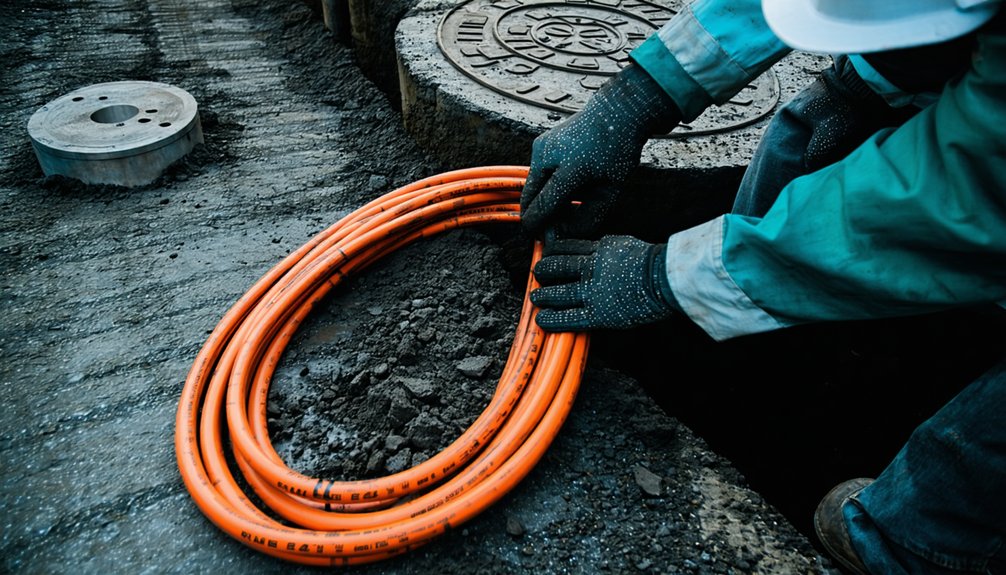Trenchless sewer repair solutions provide a cost-effective alternative to traditional methods by minimizing excavation and property disruption. Techniques such as pipe lining and pipe bursting offer efficient resolutions for various levels of damage. While initial costs for trenchless repairs may seem higher, they yield long-term savings through lower maintenance and reduced labor expenses. Additionally, these methods can greatly extend the lifespan of sewer lines, enhancing overall value. Further insights reveal the extensive benefits of these innovative solutions.
Understanding Trenchless Sewer Repair Methods
Although traditional sewer repair methods often involve extensive excavation, trenchless sewer repair methods offer innovative alternatives that minimize disruption to properties. Trenchless technology encompasses techniques such as pipe lining and pipe bursting, designed to address plumbing problems efficiently. Pipe lining involves introducing a resin-coated liner into the existing underground pipe, creating a durable water-tight seal ideal for minor leaks and cracks. Conversely, pipe bursting is implemented for severely damaged sewer lines, utilizing a metal bursting head to fracture the old pipe while simultaneously installing a new one, thereby expediting repairs.
The trenchless repair process begins with a sewer line camera inspection to evaluate the condition of the damaged sewer line, followed by necessary cleaning before repairs. Properly executed trenchless repair can extend the lifespan of the new piping to 50 to 100 years, presenting a cost-effective solution compared to traditional methods and considerably reducing repair costs associated with extensive excavation.
Cost Comparison: Trenchless vs. Traditional Sewer Repair
When comparing the costs associated with trenchless sewer repair methods to traditional techniques, substantial differences emerge that influence homeowners' decisions. Traditional sewer line repair works typically range from $4,000 to $13,000, while trenchless sewer line replacement methods can average between $6,000 and $20,000 depending on damage severity. Remarkably, trenchless pipe bursting costs between $60 and $200 per linear foot, often undercutting traditional methods that can exceed $50 to $250 per foot. Pipe lining, another trenchless option, is generally more cost-effective than excavation, ranging from $80 to $250 per foot. Although initial costs for trenchless repairs may be higher, they minimize excavation and landscaping restoration expenses, potentially yielding savings over time. Additionally, trenchless repairs usually have an average duration of just one day, whereas traditional methods can prolong project timelines and escalate labor costs considerably, affecting overall sewer line replacement costs.
Long-Term Benefits of Trenchless Solutions
The long-term benefits of trenchless sewer repair solutions greatly enhance the value proposition for homeowners. Trenchless repair methods can extend the lifespan of a sewer line by 50-100 years, considerably reducing the frequency of repairs. The incorporation of high-density polyethylene (HDPE) in new pipe installations provides exceptional corrosion resistance and durability, ensuring long-term performance across various soil conditions. Homeowners can enjoy savings of up to 30% on labor costs compared to traditional replacement methods, as trenchless technology is quicker and less invasive. This approach results in minimal property disruption, preserving landscaping and reducing the need for costly restoration efforts. Additionally, the small access points created during trenchless repairs facilitate easier and less expensive future inspections, promoting ongoing maintenance efficiency. Ultimately, trenchless solutions represent a forward-thinking choice that not only costs less but also saves time and resources in the long run.
Frequently Asked Questions
How Does Trenchless Sewer Line Replacement Work?
Trenchless technology facilitates sewer line replacement through advanced installation methods, such as pipe bursting and pipe lining. The replacement process commences with a camera inspection to assess conditions, including soil type. In pipe bursting, a larger head fractures the old pipe while pulling in a new one, whereas pipe lining uses a resin-coated liner to reinforce existing structures. Both methods offer significant benefits, including reduced project duration and favorable cost comparison against traditional excavation techniques.
What Are the Cons of Trenchless Sewer Repair?
Trenchless repair disadvantages include the impact of soil conditions on effectiveness and potential environmental considerations. A cost comparison with traditional methods often reveals higher expenses due to challenging factors such as tree roots. Project timeline factors can also be delayed by permit requirements and the need for skilled contractor selection. Customer satisfaction rates may vary, and maintenance after repairs is essential to guarantee long-term effectiveness of trenchless technology advantages.
What Is the Cheapest Way to Replace a Sewer Line?
The cheapest way to replace a sewer line often involves traditional excavation methods, utilizing cost-effective materials. Homeowners may consider DIY sewer replacement for further savings, but must navigate local regulations and potential plumbing grants. While sewer line insurance can mitigate risks, financing options are also available. Exploring excavation alternatives, such as trenchless technology, can enhance pipeline lifespan and reduce environmental impact, ultimately leading to more effective sewer maintenance and lower long-term costs.
How Much Does a Trenchless Water Main Cost?
Trenchless technology costs for water main installation typically range from $60 to $250 per linear foot, influenced by factors such as pipe depth and landscape. The benefits of trenchless repair include reduced excavation, saving on traditional repair costs that can exceed $25,000. A plumbing service comparison reveals that trenchless methods, while sometimes pricier, offer long-term savings and efficiency. Project timeline estimates vary, but local contractor rates and maintenance requirements should also be considered.



